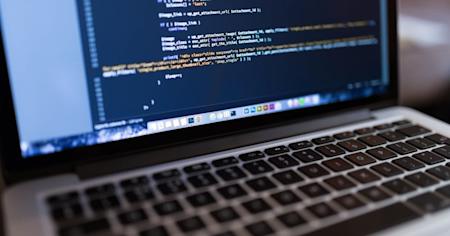Quando geres múltiplos dispositivos remotos, a execução de comandos remotos é crucial. Enviar instruções de shell e linha de comando num ambiente de trabalho distribuído facilita a redução do tempo de inatividade e acelera a resolução de problemas nos endpoints, por isso é essencial para a resolução de problemas e automação em larga escala. A parte mais difícil, no entanto, é encontrar uma solução com capacidades de prompt de comando remoto.
Felizmente, Splashtop AEM (Gestão autónoma de terminais) oferece uma solução: a funcionalidade de Linha de Comando Remota foi concebida para simplificar a execução de comandos em segundo plano, permitindo que os administradores de TI executem comandos com facilidade, mesmo sem iniciar uma sessão completa de remote access.
Com isso em mente, vamos explorar a execução remota de comandos, o que a torna valiosa e como a funcionalidade de prompt de comando remoto do Splashtop AEM pode ajudar a simplificar o acesso à linha de comando.
O que é a funcionalidade de Execução de Linha de Comando Remota / Script em Segundo Plano?
Definição
O Prompt de Comando Remoto é uma ferramenta segura no Splashtop AEM que permite aos administradores de TI executar instruções de shell ou linha de comando em computadores remotos. Funciona tanto no Windows (PowerShell) quanto no macOS (Terminal), e pode ser usado sem iniciar uma sessão de ambiente de trabalho remoto, tornando-o uma ferramenta rápida e poderosa para execução de comandos remotos.
O Splashtop AEM Remote Command Prompt suporta tanto execuções de comandos pontuais como de scripts e tarefas, dando às equipas de TI a flexibilidade de gerir quantos dispositivos remotos forem necessários com facilidade. Isto proporciona uma velocidade e conveniência sem precedentes para gerir ambientes remotos e endpoints distribuídos.
Como isso funciona?
O Remote Command Prompt do Splashtop AEM não é apenas poderoso, é também fácil de usar. Podes agendar e executar comandos em poucos passos rápidos:
Dentro da consola do Splashtop, clique no ícone de Comando Remoto ao lado do dispositivo para o qual deseja enviar o comando.
Inicia sessão com as tuas credenciais de administrador Mac ou Windows para autenticar a tua conta.
Use o PowerShell no Windows (versão 4.0 e superior) ou o Terminal no macOS para executar comandos; estes são executados em segundo plano para evitar interromper o trabalho no(s) dispositivo(s) conectado(s).
A partir da janela de comando remoto, também podes iniciar uma sessão remota, guardar o teu histórico de comandos remotos e desligar com um clique. Quando fechas a sessão, pode ser guardada como um registo de histórico de comandos ou fechada sem guardar.
Porque é que o Prompt de Comando Remoto é Importante para as Equipas de TI
Com tudo isso dito, alguns podem agora se perguntar quais são os benefícios de usar Prompts de Comando Remoto, e para que podem ser usados que não se pode já fazer com acesso e suporte remoto?
Um dos maiores benefícios dos Prompts de Comando Remoto é a capacidade de executar em segundo plano. Os administradores podem executar instantaneamente comandos de diagnóstico, corrigir problemas e instalar atualizações sem interromper o utilizador final, permitindo que o trabalho continue sem interrupções.
Além disso, usar scripts e tarefas permite que os administradores executem scripts em vários endpoints simultaneamente. Com a automação remota, podes enviar comandos por um ambiente distribuído, facilitando a gestão e suporte a uma força de trabalho remota.
Isso torna o Prompt de Comando Remoto ideal para remediação rápida. Líderes e administradores de TI podem rapidamente enviar comandos para reparar problemas ou executar diagnósticos sem precisar de acesso remoto completo, permitindo-lhes resolver problemas de forma eficiente sem interromper o trabalho do utilizador final.
Como bónus, usar o Remote Command Prompt do Splashtop AEM regista o que foi executado e por quem, o que é uma ferramenta importante para auditoria e conformidade de TI, bem como uma forma de melhorar a resolução de problemas e a responsabilidade. Como os utilizadores precisam de credenciais de administrador para iniciar sessão, e as sessões são guardadas nos registos de histórico de comandos, é fácil manter e aceder a registos para rastrear alterações e identificar atividades suspeitas.
Casos de Uso e Cenários Principais
Claro, dizer como o Prompt de Comando Remoto facilita o suporte e a resolução de problemas é uma coisa, mas quais são alguns casos de uso práticos para a execução de comandos remotos? Existem vários cenários em que executar comandos remotos pode ser benéfico tanto para equipas de TI quanto para utilizadores finais.
Por exemplo, limpar arquivos temporários e caches é uma tarefa de manutenção comum, mas necessária. Com o Prompt de Comando Remoto, administradores, MSPs e outros líderes de TI podem enviar um comando através dos dispositivos para limpar esses arquivos sem precisar de fazer login remotamente em cada dispositivo. Da mesma forma, o Prompt de Comando Remoto pode ser usado para automatizar a limpeza de disco local para manter os dispositivos a funcionar sem problemas, bem como automatizar alterações como configurações de registro.
O Remote Command Prompt é também uma ferramenta poderosa para diagnósticos remotos. Os administradores de TI podem usá-lo para recolher informações do sistema usando comandos como “ipconfig” ou “whoami”, tornando fácil a recolha de informações valiosas e a execução de diagnósticos sem interromper os utilizadores finais.
Claro, o Prompt de Comando Remoto é também uma ferramenta poderosa para suporte e manutenção de TI. Os administradores de TI podem usar os prompts de comando para uma rápida resolução durante incidentes de segurança ou falhas, enviando comandos e atualizações de segurança vitais para dispositivos remotos. Os prompts podem até ser usados para reiniciar serviços ou reiniciar dispositivos remotos após atualizações, garantindo que mesmo dispositivos não assistidos sejam devidamente mantidos e atualizados.
Como o Splashtop AEM Executa Comandos Remotos de Forma Segura
Cibersegurança é uma grande preocupação para empresas de todos os setores, especialmente quando usam ferramentas que lhes permitem aceder e gerir dispositivos remotamente através da sua rede. As equipas de TI preocupadas com a segurança de enviar comandos remotos para os endpoints ficarão aliviadas ao saber que o Splashtop AEM é construído com a segurança em mente e usa múltiplos protocolos de segurança para proteger endpoints e redes.
Primeiro, o Prompt de Comando Remoto funciona dentro da estrutura de conexão criptografada AES-256 do Splashtop, fornecendo criptografia de ponta a ponta, juntamente com recursos de segurança projetados para atender a uma ampla gama de padrões e regulamentos da indústria e do governo.
Além disso, o Prompt de Comando Remoto requer credenciais de administrador para acessar dispositivos, então apenas administradores têm acesso. Uma vez validados, os administradores podem registrar ações, salvar scripts e auditar o uso para monitorar a atividade e observar comportamentos suspeitos.
O Prompt de Comando Remoto também suporta PowerShell com autenticação segura, garantindo que apenas usuários autorizados e autenticados possam fazer login e enviar comandos.
Como Usar o Prompt de Comando Remoto no Splashtop AEM
Se o Prompt de Comando Remoto do Splashtop AEM parece algo de que sua empresa pode se beneficiar, é fácil de executar. Basta seguir estes passos rápidos:
Vá para a consola Splashtop e clique no ícone "C:\” ao lado do endpoint que deseja
Autentica o teu login com as credenciais de administrador.
Insira o comando ou script (seja na sintaxe do PowerShell ou do terminal, dependendo do dispositivo)
Com o comando ou script inserido, você pode instruir o Prompt de Comando Remoto a executar o comando, monitorar a saída e (se assim desejar) salvar log/histórico.
Feche a sessão, ou se quiser conectar-se ao dispositivo remoto, pode iniciar uma sessão de acesso remoto a partir da mesma interface.
Se precisar executar comandos em vários dispositivos, a funcionalidade de comandos agendados de scripts e tarefas pode ser usada para a implementação de tarefas em massa. Esta funcionalidade permite enviar comandos para quantos endpoints forem necessários para a implementação de tarefas em massa, atualizações e mais.
Pode executar scripts e comandos de tarefas em alguns passos rápidos:
A partir da consola do Splashtop, vai a Gestão → Ações 1-para-Muitos.
Seleciona Criar Ação e seleciona o tipo de ação que desejas executar.
Define o Nome da Ação e as Definições da Ação.
Clica em Guardar e Executar para executar a ação imediatamente, ou Guardar e Agendar para agendá-la para um horário definido.
Seleciona os computadores nos quais queres executar a ação, depois insere as tuas credenciais e clica em Executar.
Depois disso, estás pronto. Enviar comandos remotamente nunca foi tão fácil, independentemente de quantos endpoints geres.
Comece com o Splashtop AEM
Seja você um administrador de TI gerindo um ambiente remoto ou um Provedor de Serviços Gerenciados apoiando vários clientes, o Prompt de Comando Remoto do Splashtop AEM pode ajudá-lo a preencher a lacuna entre visibilidade e ação. Agora é rápido, conveniente e fácil enviar prompts de comando pela sua rede sem precisar interromper o usuário final ou iniciar uma sessão de acesso remoto, para que você possa gerenciar dispositivos de qualquer lugar com facilidade.
O Prompt de Comando Remoto traz velocidade, segurança e escalabilidade sem precedentes para as operações de TI, capacitando equipas de TI e MSPs a gerenciar qualquer número de endpoints de um só lugar. Você pode ver por si mesmo como a execução de comandos em segundo plano facilita a manutenção de endpoints quando começa com uma avaliação gratuita do Splashtop AEM.
Experimente o Splashtop AEM e o Prompt de Comando Remoto por si mesmo hoje:





